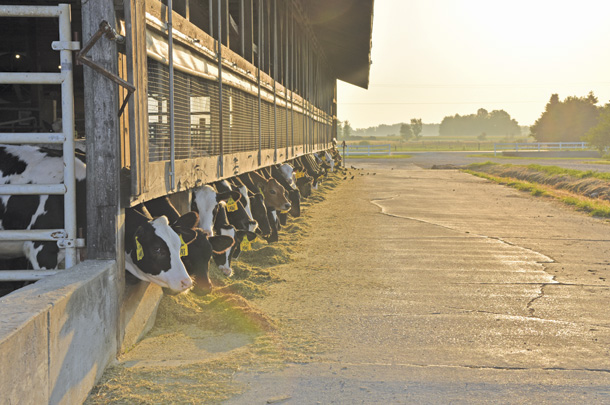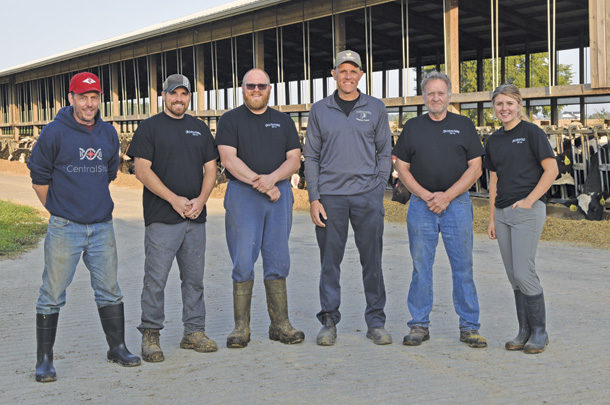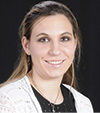A successful breeding protocol keeps a herd at the top of its reproductive game.
Deluur Future, in Marlette, Michigan, the 2,200-head Holstein and Jersey heifer-raising segment of Deluur Dairy, which has other facilities in Deckerville and Carson, Michigan, exemplifies this, being among seven herds with 12-month pregnancy rates of 34% or higher to be recognized with the CentralStar Cooperative ReproStar Award.
Established in 2019, the ReproStar Award given by CentralStar Cooperative recognizes producers for their reproductive efficiency accomplishments. When selecting the winners, a panel of three judges evaluates each dairy’s data for multiple factors known to influence pregnancy rates.
“It takes dedication and following the protocols to achieve the repro numbers we have over the past years,” says Hendrik Eggink, farm owner. “And that starts at day zero when the animal is born – balanced nutrition and rations are key to calving in heifers at an average age being around 21 months.”
Meet Deluur Future
The Eggink family came to the U.S. in 2002 and has been milking cows ever since. Hendrik and his wife have been blessed with 10 children and three grandchildren, with another on the way.
“Everyone old enough pitches in,” Eggink says, “from calf feeding to cow feeding and from manure hauling to the maternity barn.”
Outside the family, they also have about 40 employees between both their cow and heifer operations.
Heifers arrive at the Future facility around 4 months old. Upon arrival, the goal is to raise them to transition anywhere from 359 and 365 days old into the breeding pen.

Deluur Future heifer facility was recently recognized by CentralStar Cooperative for their reproduction efficiency accomplishments, including a 47% pregnancy rate, a 59% conception rate with 78% submission rates. Photos courtesy of CentralStar Cooperative.
“Raising heifers is a very expensive endeavor and has to be done well. Otherwise, you will be better off buying pregnant or fresh heifers,” Eggink says. “The employees and professionals that assist his team have aided in the creation of a successful program for us.”
Upon reception of the award, their heifer facility boasted a 47% pregnancy rate, a 59% conception rate with 78% submission rates – all without activity monitors. In fact, nearly all of their heat detection is done visually.
Reaching for repro success
Behind the young herd’s reproductive success is an aggressive breeding protocol. A key for them has been consistency, right down to all the daily managerial routines.
David Lindberg, area sales manager at CentralStar Cooperative, has worked with Deluur Future for over 10 years. He explains, “What they do special on that heifer-growing facility is that they are very meticulous and regimented in how they keep their stock.”
Each morning after scraping pens and feeding, the breeder arrives at 7, starting the day off in a synchronized rhythm.
Though most of the breeding is done based on observation, a prostaglandin treatment program was incorporated into the mix to ensure heifers calve at 22 months old.
“We’re pretty aggressive on our breeding protocol,” Jason Franklin, farm manager, says. “(Heifers) go into our breeding program at 359 days and then get the first (Lutalyse) shot.”
Animals who don’t come into heat 14 days later are given a second treatment. After that, heifers who don’t catch after the next 11 days are then moved to an Ovsynch program. However, Franklin notes that it is very rare they have heifers who don’t catch on the first or second attempt and need to resort to the third stage.
Otherwise, the program is made up of tail chalking to detect any visible heats. Pregnancy checks are done via palpation at 32 to 42 days post-breeding. Holsteins are first bred to sexed semen, followed by conventional for all remaining services. Jerseys, however, are bred with sexed semen for the first two services before moving to conventional beef semen. Heifers past 420 days without settling are finally marked as “do not breed.”
Whole-herd management
The Deluur team is quick to credit all the factors that have assisted in their successful reproductive program, not just the hands-on reproduction protocols.
Other details Jason attributes to setting their heifers up for success are high-quality feed and facilities. Their nutritionist also spends a good deal of time with the animals, walking pens and checking body condition scores on a weekly basis. Air circulation, proper space without overcrowding and rigid cleanliness, he says, all play roles in keeping stress low throughout the herd.
“The facilities themselves are second to none,” Lindberg agrees. “Each heifer has the space to have her own stall, and pens are not overcrowded, which helps a lot from a breeding aspect.”
In addition to headlocks, the barns also have a separate catch chute, making it significantly more efficient to catch and handle loose heifers.
Hallmarks of breeding excellence
This year’s ReproStar judges noted that there were distinct themes among the winners: teamwork and compliance with precise protocols. It is no surprise that Deluur Future excels in both of these areas, as attested to by managers and other professionals working on the team.
“It truly is a team effort between the on-farm workers to those from outside parties like our breeders, vets and nutritionists,” Eggink agrees wholeheartedly.
Even without the aids of certain technologies, this facility proves that with the right team, consistency and dedication is what will set a herd apart from the rest.









